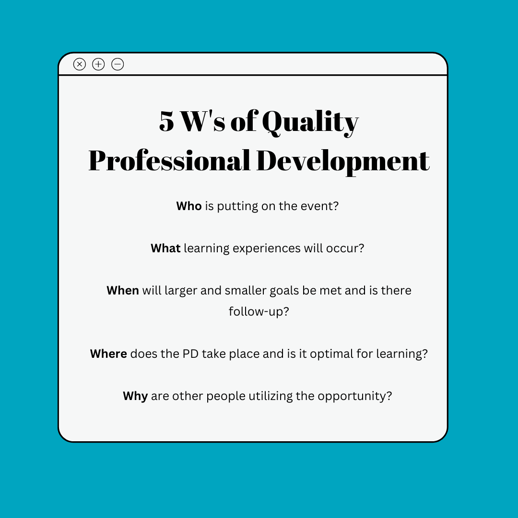Career and Technical Education (CTE) | Professional Development
How to Pursue Professional Development Opportunities
After serving as a Texas FFA state officer in 2018, Josh Witherspoon joined the iCEV team as a part-time employee for 3 years before taking on the role of content development specialist in 2022. Witherspoon holds a bachelor's degree in agricultural communications from Texas Tech University, in which his experience and proficiency in writing, marketing and CTE allow him to effectively communicate the successes of CTE educators and students and the value iCEV has to offer.
It’s never too early or late in an educator’s career to think about professional development (PD). Investing in oneself as an educator is the best way not only to ensure career growth but also academic growth and success for students. Educators who regularly attend professional development opportunities experience a boost in confidence, increased knowledge base, better organizational skills and learn new and innovative teaching strategies. For many educators, pursuing PD may seem tedious or out of reach; however, consistent professional skills development is essential for today’s educators, as their application of new knowledge directly impacts students and their success. In this blog, iCEV will explore how CTE educators can pursue relevant and impactful professional development opportunities to enhance their skill set and students’ learning experiences.
Identify Your Need
The first step an educator must take, even before pursuing a PD opportunity, is to identify a need they have. Teaching is a challenging career in which educators may find themselves strong in certain areas of teaching and lacking in others which is natural. Examples of needs educators might have and could be remedied by PD include technology training, social-emotional learning implementation, pedagogy practices and instructional strategies.
When identifying your needs as an educator, reflect on the past year of teaching and find what worked, what didn’t and challenges you faced. The continually changing standards for curricula, guidelines for school districts, and educational technology have made it difficult for educators to keep up with the changing trends and best practices in education. Professional development allows teachers to design personalized learning experiences for students, produce applicable course content to increase students' performance, and enhance their professional skills and creative capacity. Once an educator has identified their personal needs and assessed the needs of their students this information should serve as the guide for what PD opportunity an educator should pursue.
Find Relevant PD
After identifying your needs as an educator it’s time to begin the hunt for high-quality PD opportunities. When beginning the search for impactful PD opportunities, the internet is often the best place to start. Search for your specific needs online and find “thought leaders” or businesses and organizations with a large online presence where they share information relevant to your need. Educators can also look to educational entities like their state association and smaller educational companies for PD opportunities. To help educators assess the quality of a PD opportunity use the "5 W’s of Quality Professional Development" to ensure the experience is purposeful and will add value to your career. The 5 W’s include:
PD should represent the height of teaching. At its best, it is purposeful, relevant, differentiated and brings people together to fulfill a vision of what schools and districts can be.
Present to Administrator
After identifying your need as an educator and having located a PD opportunity that will meet your needs, the next step is to present your information to your administrators. Not in all cases will educators be required to report pursuing PD to administrators but often must get approval if the PD opportunity costs money or requires time away from the classroom. To help your administrator understand the value of pursuing the PD opportunity share with them the research you conducted, and the challenges and needs identified after reflecting on past experiences. This will help them understand the value the PD opportunity has to offer you not only as an educator but also the success of students.
Once you’ve been given administrator approval, it’s time to register! Register for the PD event ahead of time to ensure your seat is saved. Ensure you know all the logistics of the event including travel, overnight stay and what is expected of you as an attendee. Prepare yourself by continuing to reflect on how you’ve been challenged in the past and how you want to grow as an educator. Keeping this information fresh in your mind will make PD opportunities more effective and organic.
Quality PD isn’t something passively received, but rather it is interacted with and created through purposeful engagement. It is differentiated across needs and transferable to every teacher’s classroom in answering the question in their mind: “How will this help me teach and my students learn?”
To learn about iCEV’s FREE professional development webinars, visit our website to learn more and register today! For more resources and PD tips, stay tuned to our social channels, where we’ll share even more resources and strategies.



